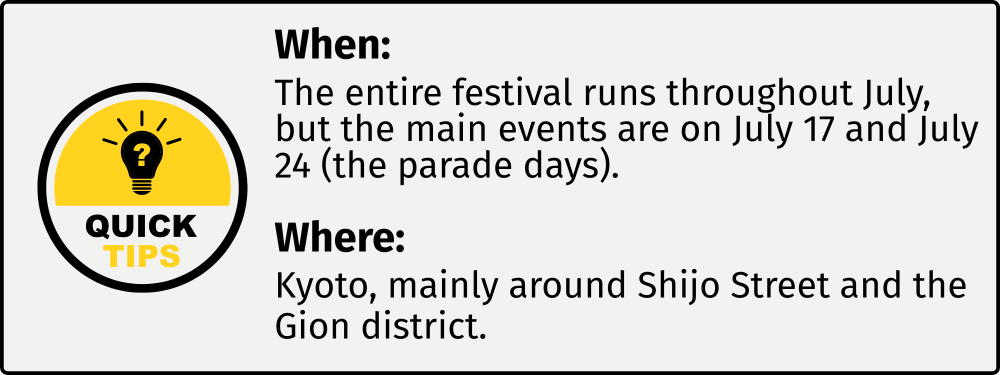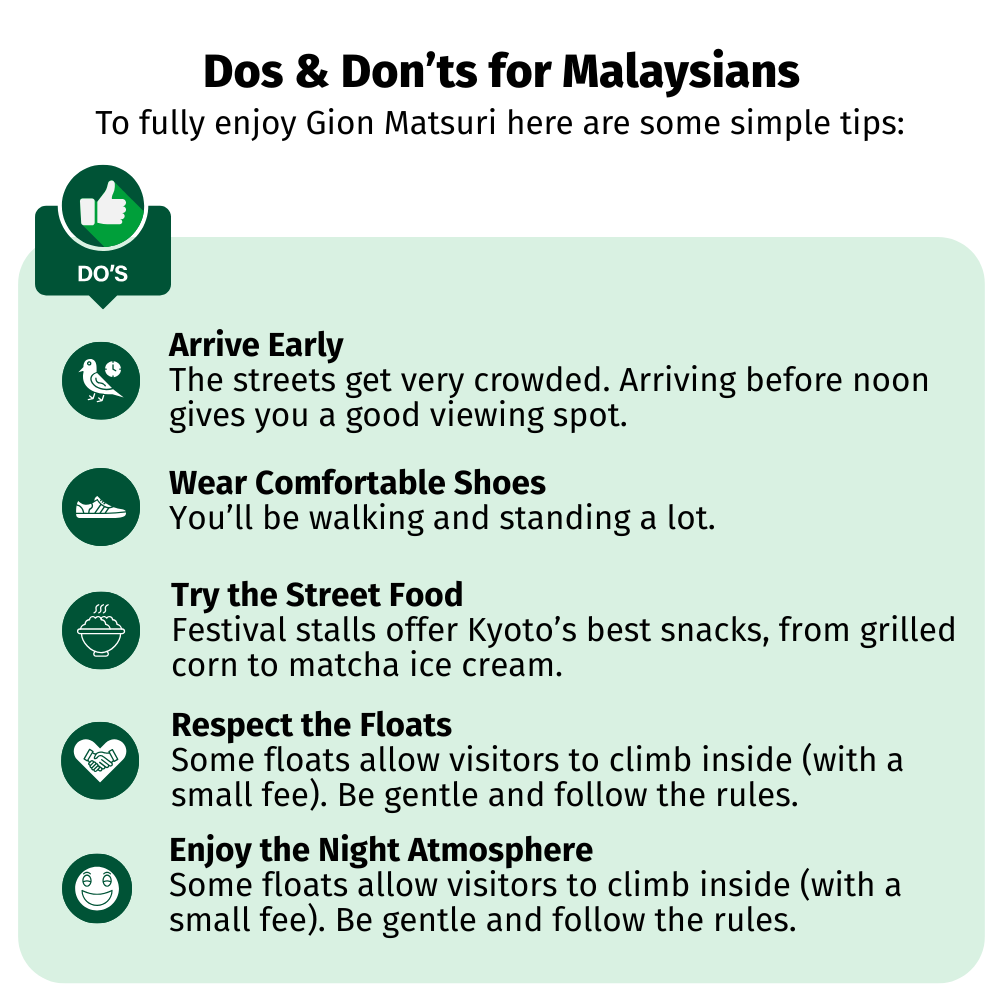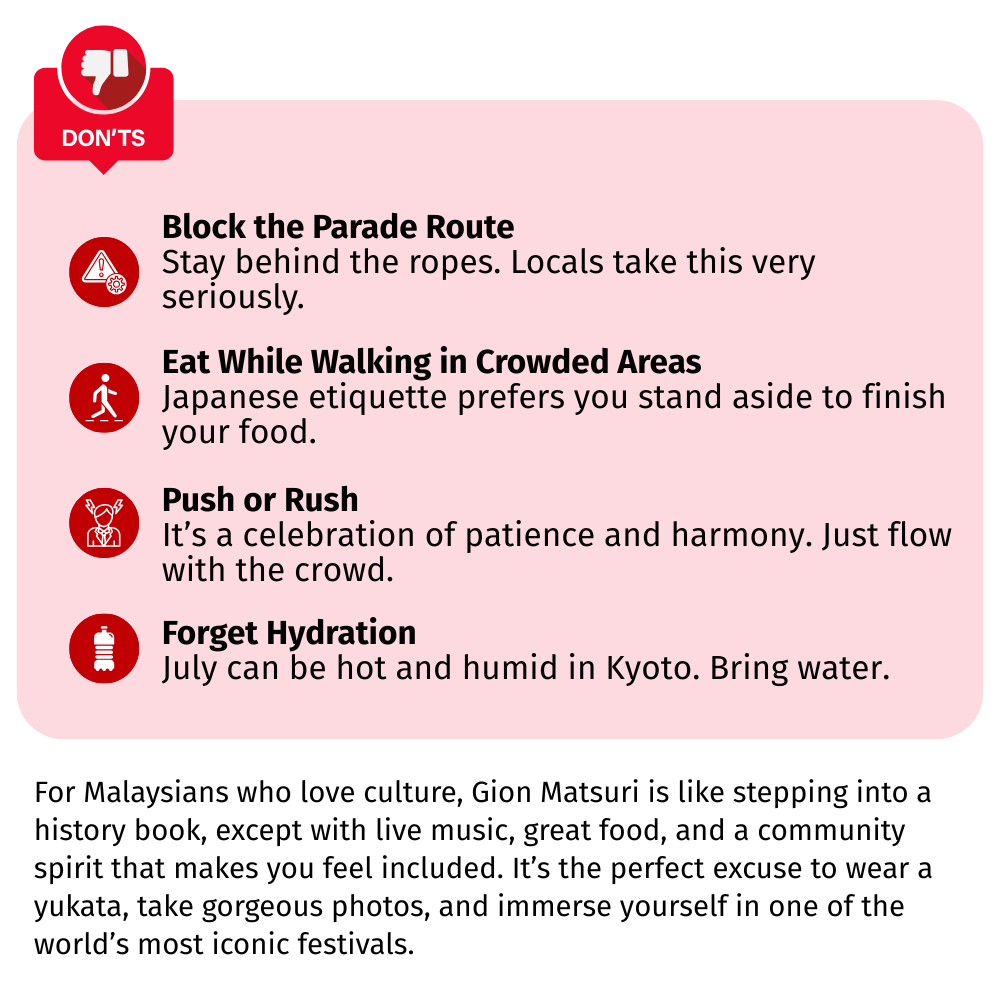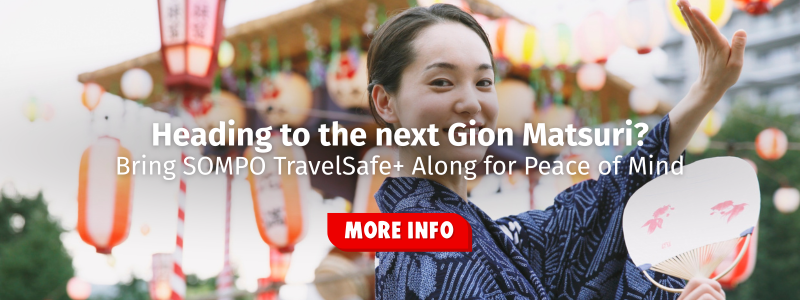Malaysians Must Experience Japan’s Gion Matsuri At Least Once

If there is only one Japanese celebration that every Malaysian should experience in Japan, it is without a doubt Gion Matsuri in Kyoto. This is not just a festival, it’s a month-long cultural spectacle that transforms the entire city into a living museum of tradition, colour, and music.
Kyoto Comes Alive!
Imagine the old streets of Kyoto glowing with lanterns, giant wooden floats slowly making their way through town, and the sound of traditional flutes and drums filling the summer night. The air smells of festival food, yakitori grilling, takoyaki sizzling, and sweet kakigori (shaved ice) waiting to cool you down.
Locals wear yukata (summer kimono), children run around with paper fans, and visitors from all over the world join in the celebration. It feels like the entire city has pressed pause just to honour its history and have a good time together.
Purpose and History
Gion Matsuri dates back over 1,000 years. It began as a religious ceremony to appease the gods during an epidemic in 869 AD. Kyoto’s citizens built giant floats (called yamaboko) as offerings to drive away disease and misfortune. Over time, it evolved into one of Japan’s most famous annual events, still closely tied to Shinto traditions.
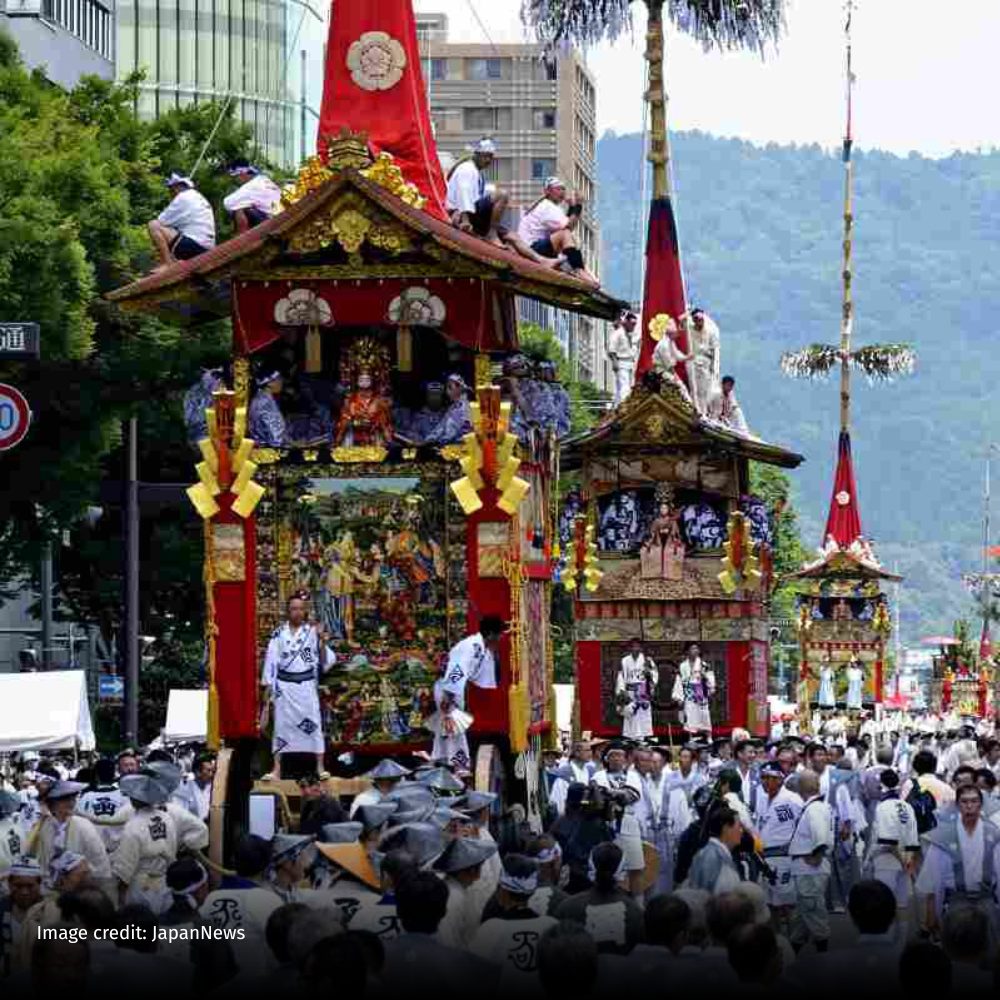
The highlight is the Yamaboko Junko parade where massive, beautifully decorated floats (some weighing over 10 tonnes!) are pulled through the streets. Each float represents a neighbourhood and is adorned with tapestries and carvings that tell stories from Japanese history and mythology.
